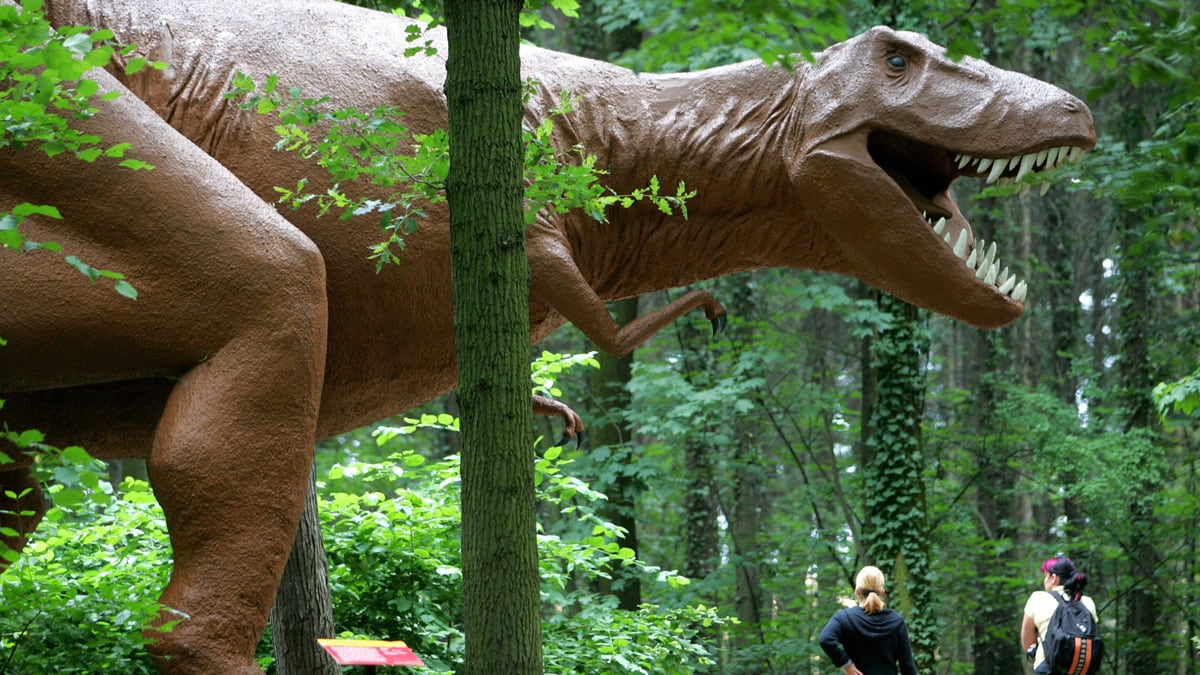The study may well have been made for 12-year-old boys everywhere. Dinosaurs, 200 million years ago, burped and farted among each other, blowing out enough methane to cook the earth in a spectacular episode of climate change. The only things missing were a Lego reconstruction and a nudie magazine.
Yet the study itself quickly appeared to be, well, over-gassed in the media. Researchers at Liverpool John Moores University, who published the study in the journal Current Biology, found that T. Rex and its prehistoric brethren passed about 520 million metric tons of methane—the equivalent of about 706 gallons of gas a day—that contributed to the warming of the planet.
But no one ever said anything about extinction—except for the news outlets that picked up the story for its obvious headline potential. Researchers had looked at global climate change, and found that, yes, such a massive amount of methane expulsion “could have been significant in sustaining warm climates.”
But reports that the warming was what killed off the animals?
Blatant sensationalism, says Paul Myers, a biology professor at the University of Minnesota. On his blog, Myers addressed the extinction question. “The paper makes no such claim, instead suggesting that the mass of herbivores during the Mesozoic would have made a substantial, but stable, contribution of greenhouse gases to the atmosphere that may have been partially responsible for the warmer, moister climate of the era and the greater primary production,” he wrote. In other words, the gassy beasts made the world pretty warm and not so pleasant to live in. But none of them died because of it.
One of the clues behind the study’s purported bombshell is buried in the far-from-precise way it was researched. How do you measure farts from millions of years ago, anyway? By researching bacteria in modern-day animals’ stomachs, it turns out. Then compounding the volume of an animal’s intestines to about the size of a dinosaur for a rough estimate.

The closest specimen in our contemporary midst is the cow, which has taken the flatulence and climate-change theory for a spin before. Penn State agriculture researcher Virginia Ishler calculated in 2008 that the average dairy cow produces up to 70 gallons of methane each day. Across the world’s cow population, that translates to about 80 million metric tons of gas each year, according to the Environmental Protection Agency. The animals’ prehistoric ancestors, by comparison, emitted about six times as much in a year, scientists surmised.
That’s a wide disparity, but that’s before you put humans into the equation. Between agriculture, landfills, and energy excavation, we now emit hundreds of millions more tons of methane into the atmosphere. We may be heading toward climate catastrophe due to greenhouse-gas emissions, but death for everyone on the planet as a result doesn’t appear imminent.
Since 1990, the leading theory for the dinosaurs’ demise has been an asteroid that struck the Yucatan Peninsula and turned the entire planet into a fireball. What followed appears to have been an immense extinction and production of enough haze to deflect most sunlight and drop the planet into deep, dark winter. There are even remnants of a crater as evidence.
The flatulence study doesn’t claim climate change killed dinosaurs. But the creatures did, it appears, spend their last days on a planet as hot and musty as a gym locker room.






